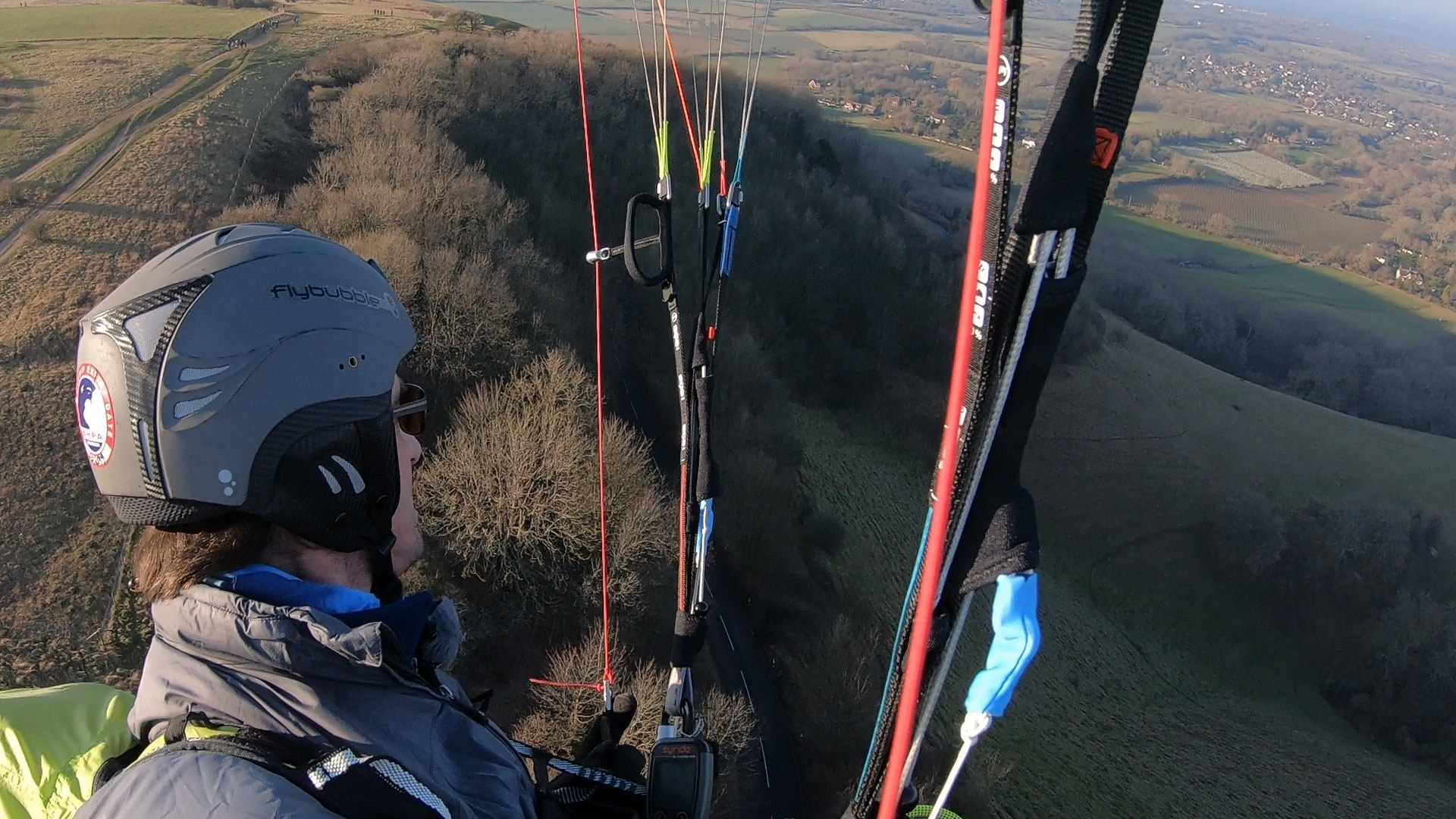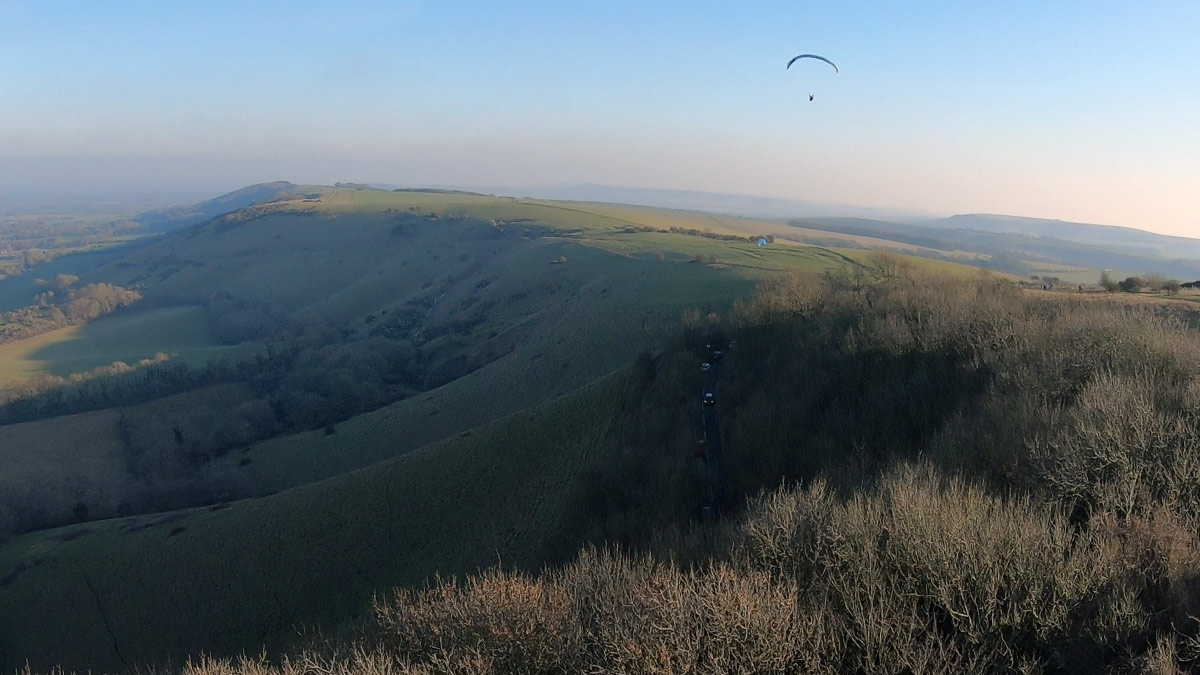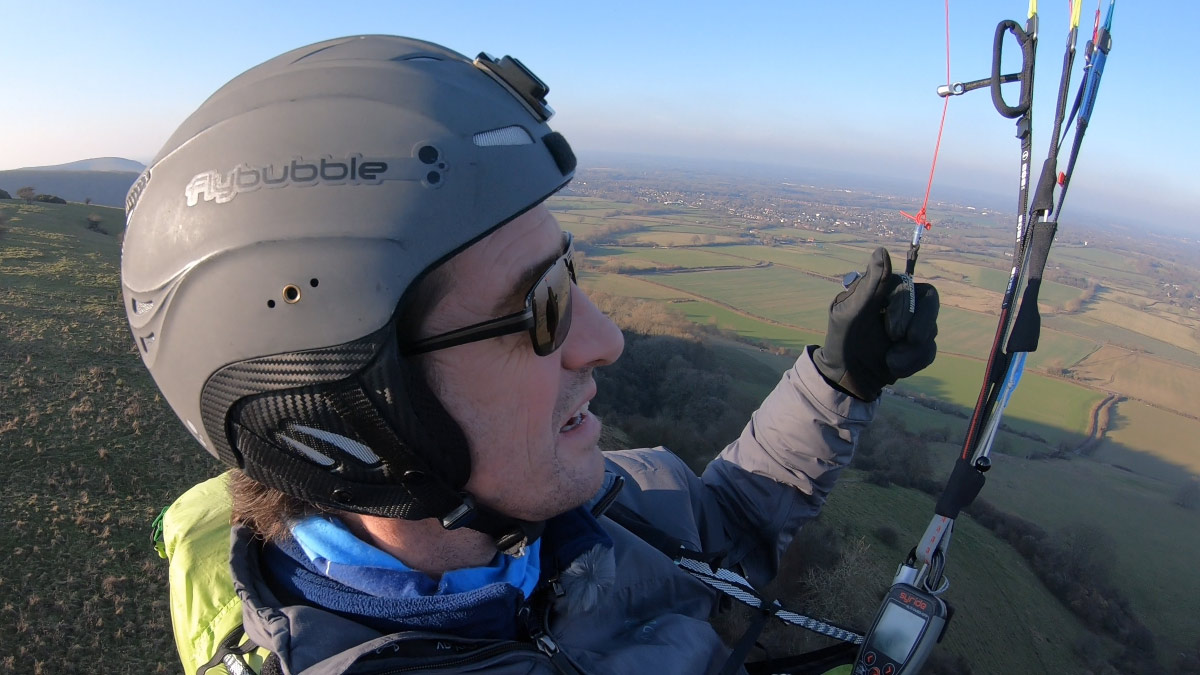
Flying in light lift takes a lot of skill. It can take a long time to learn because every time you get it wrong you land, and the lesson is over. Here are some tips to help you soar for longer.
Simple rules for flying in light lift
1. Kite your wing on launch, and wait until you feel the lift
It’s subtle, but you’ll notice a difference between neutral or sinking airflow (your wing will tend to hang back slightly) and the approach of lift (your wing will tend to pitch forward slightly). When you think you feel the surge, go!
2. Be prepared to slope land (often)
If you wait until getting up is a sure thing, it’s not light any more. You only learn these skills by trying, so risk a little walk for the reward of becoming a levitation expert.

3. Turn in lift, not in sink
This helps to keep you in the lift for longer, and also produces a better tighter turn. If there’s no traffic around, you can even turn back straight away and sneak in a few climbing S turns or figure of 8s.
4. Fly near the transition between light and shadow
Shaded regions are cool and don’t produce lift. The air can become dense and reluctant to move, and if it’s on a slope, may even want to slide downhill despite a gentle breeze pushing in against the hill. Where the wind blows across sunny terrain it will gather warmth (even if it’s 3 degrees, it’s warmer than the frozen shadows) and this air will rise over the cold air.
5. When you encounter lift on the ridge, turn into wind and follow it outwards
This has been covered in this article on Progressing Beyond Ridge Lift. It’s an effective technique to find better lift and gives you a much larger search area.

6. Work every scrap of lift
Pilots who struggle in light conditions often do long straight soaring beats and don’t bother to respond to the little beeps in between. When it’s light, the ‘average’ along a ridge might not be enough, and you’ll slowly sink out this way. Every metre you gain turning in a thermal can make the difference. You’re aiming to stay in the game for longer, to increase your chances of striking it lucky.
7. Watch your vario averager
It’s especially helpful in light lift to check the averager on your vario. Set it to 15 seconds so it corresponds to a full thermaling turn, or 20 seconds if you tend to turn at a slower rate. The averager will then indicate whether the last turn was worth repeating.
8. Watch other pilots for signs of lift
Track their position against the horizon. If you see them climbing, move over to where they are, or somewhere upwind of them to encounter the next thermal. If someone is always above you, try and figure out what they are doing. Sometimes it’s just an oversized wing; sometimes it’s a piloting thing.
Want to see more? There's no better way to support our efforts than buying from us. We'll ensure you get great service! Choose from our huge range AND enable us to produce more videos and articles to benefit the freeflight community.
Paragliding in light lift: video
Join us on a shaded winter ridge in England for a gentle flying lesson.

